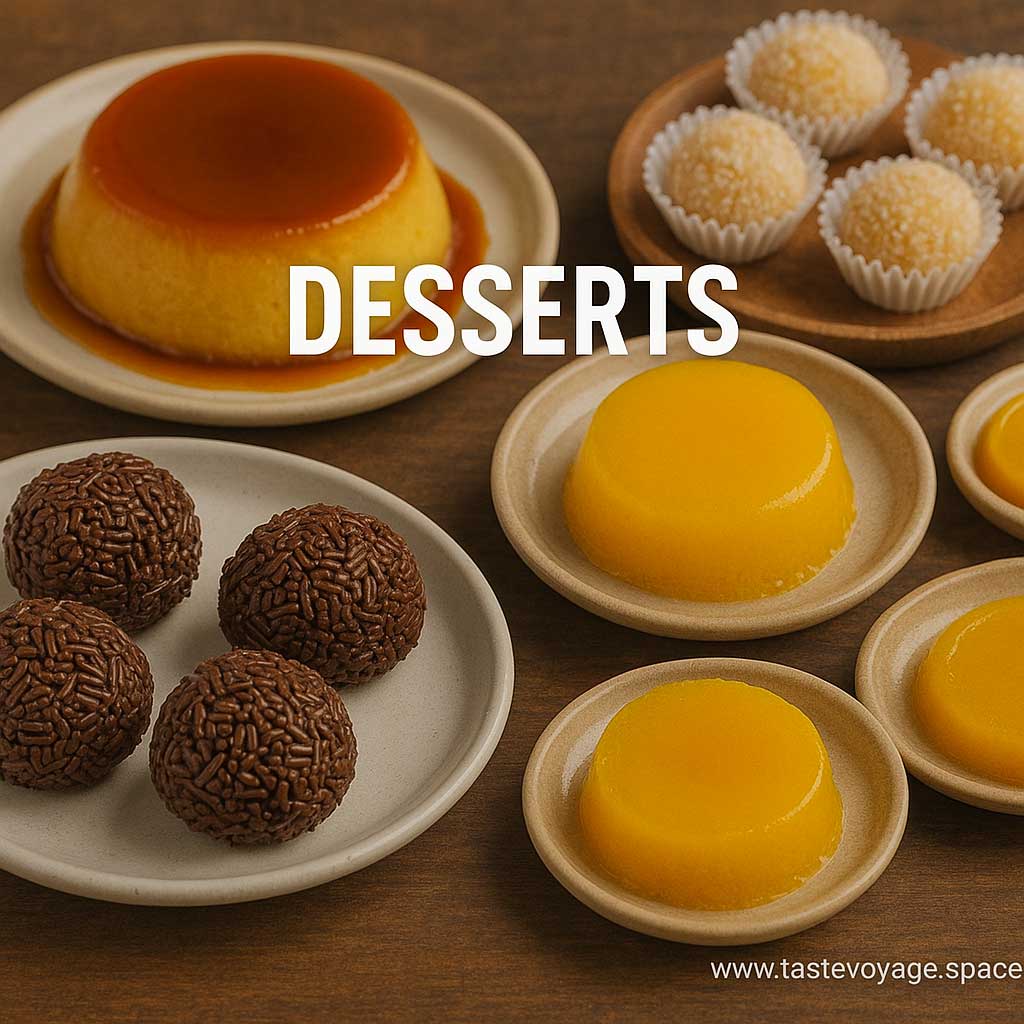Baba de Moça: Delicious Brazilian Coconut Dessert Recipe
Travel the World Through Food >> Brazilian Cuisine>>Desserts>> Baba de Moça: Delicious Brazilian Coconut Dessert Recipe
Baba de Moça: Delicious Brazilian Coconut Dessert Recipe
Discovering Baba de Moça: A Brazilian Coconut Delight
Brazilian Cuisine is renowned for its vibrant flavors and diverse culinary traditions. Among its many treasured desserts, Baba de Moça stands out as a sweet symbol of the country’s rich culinary heritage. This traditional coconut-based treat captures the hearts of locals and visitors alike with its delicate texture and luscious taste. Let’s explore the cultural significance and culinary artistry behind Baba de Moça.
A Sweet Reflection of Brazilian Heritage
Baba de Moça holds a special place in Brazil’s dessert landscape. Its origins trace back to regional festivities and family gatherings, where it is often served during celebrations. The dish embodies the Brazilian spirit of warmth and conviviality, often made with ingredients that are abundantly available in coastal regions. Its comforting sweetness and aromatic coconut flavor evoke feelings of home and tradition, making it a beloved fixture across generations.
The Art of Brazilian Confectionery
What makes Baba de Moça truly remarkable is its craftsmanship. The dessert features a smooth, custard-like consistency that results from expertly combining coconut milk, sugar, and egg yolks. This careful balance creates a harmony of flavors—rich, sweet, and subtly tropical. Its glossy appearance, often garnished with grated coconut or a sprig of mint, reflects the artistry of Brazilian confectionery. This dish showcases the creativity and skill of local cooks, who have perfected its preparation over centuries.
Cultural Significance in Festive Celebrations
Baba de Moça is more than just a dessert; it is a culinary expression woven into Brazil’s festive fabric. It is commonly served at weddings, religious festivals, and family gatherings. During these events, the dessert’s presence symbolizes sharing, joy, and the celebration of life’s sweetest moments. Its versatility allows it to be enjoyed on its own or paired with other traditional sweets, emphasizing its role as a central element in Brazilian culinary festivities.
A Reflection of Brazil’s Tropical Abundance
The flavor profile of Baba de Moça highlights the lush tropical ingredients that characterize Brazilian produce. Fresh coconuts supply the essential ingredient—coconut milk—that gives the dessert its distinctive aroma and taste. The natural sweetness of the coconut complements the generous use of sugar, resulting in a harmonious blend that celebrates the bounty of Brazil’s tropical climate. This connection between ingredients and environment underscores the dish’s authenticity and cultural depth.
Embracing Baba de Moça’s Timeless Charm
Today, Baba de Moça continues to delight palates across Brazil and beyond. It serves as a testament to the country’s rich culinary traditions and its mastery of coconut-based desserts. Whether enjoyed during a special celebration or as a simple treat, this dessert invites everyone to experience A Taste of Brazil’s warm hospitality and vibrant food culture. Its enduring popularity is a reminder of how food connects us to tradition, community, and the joy of shared moments.
In Conclusion
Baba de Moça is more than just a sweet treat; it’s a celebration of Brazil’s natural bounty and culinary artistry. Its cultural significance and timeless appeal make it a must-try for anyone eager to explore authentic Brazilian flavors. With its inviting aroma and luscious texture, Baba de Moça continues to enchant and inspire, preserving the sweet spirit of Brazil’s vibrant food heritage.
